As an Amazon Associate I earn from qualifying purchases.
Butterflied, pan fried trout with the youngest, freshest peas. What could be more springtime than that? Here’s how to make crispy fried trout with either fillets or a butterflied fish.
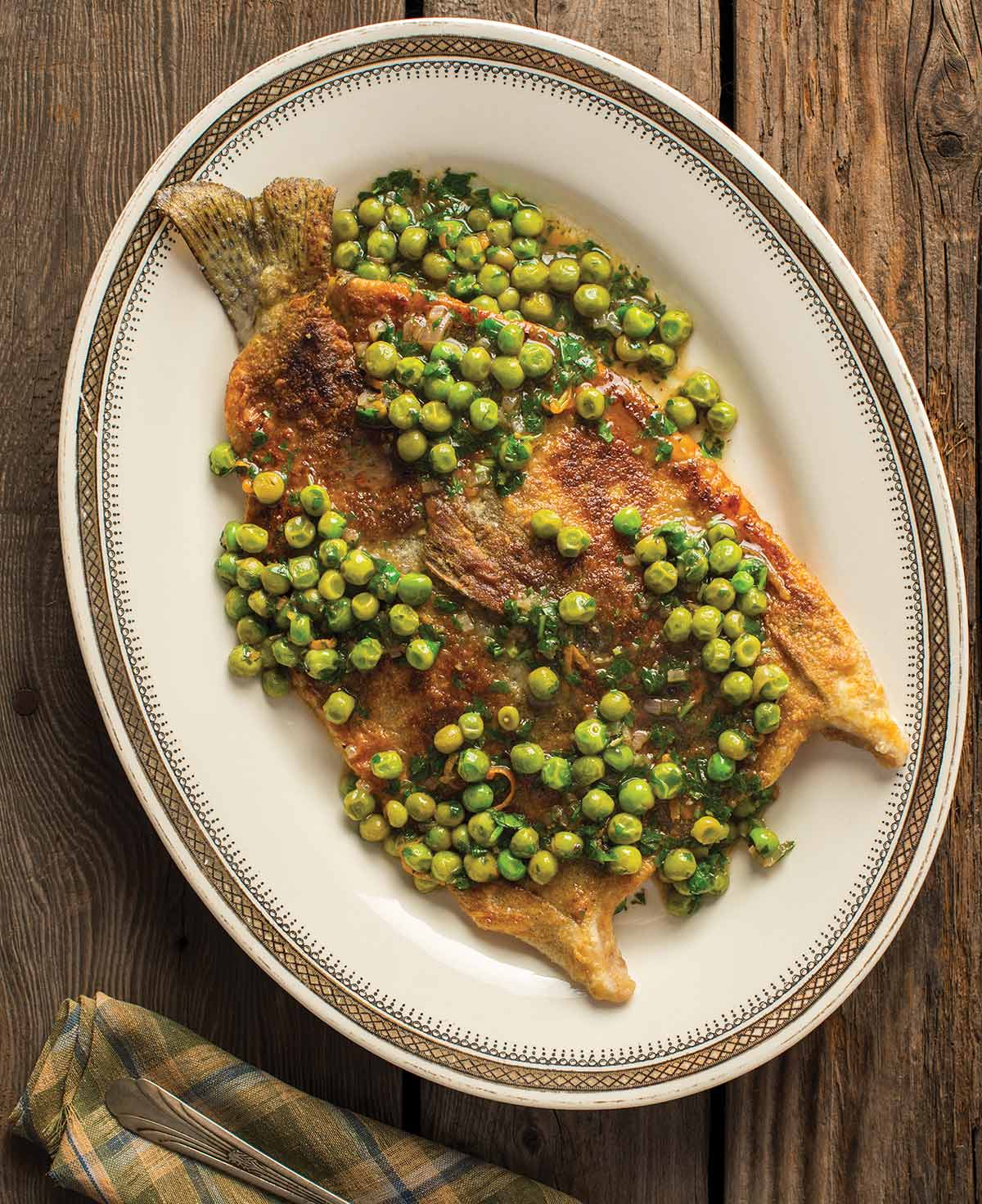
Pan fried trout, either in fillets or butterflied, are a rite of spring for me. Seared crispy skin, flaky fish, peas, a little butter, parsley and lemon juice at the end. Classic and lovely.
The trick here is to fry the skin side of fillets or a butterflied fish in the butter, basting the meat side with the hot butter to set it before flipping it. The result is a pan fried trout that is crispy but not overcooked.
Start with the trout. You obviously want trout that will fit in your pan. The farmed rainbow trout you buy in the supermarket are sold that size for that reason, and anglers will want to remember, more or less, what size your frying pan is. But if you catch bigger trout you can cut the fillets down to size.
If you catch really big trout, like more than a few pounds, you will want to use the method in my recipe for salmon with cucumber sauce.
Making Pan Fried Trout
Salt the fillets on both sides about 30 minutes to an hour before you start cooking. I keep the fish in the fridge for this. When you are ready to make your pan fried trout, take out the fillets and pat them dry.
I dredge the trout in flour, but you don’t have to. I like using the flour because it further dries the surface and makes for a crispier pan fried trout. Rice flour is a great alternative for people who are eating gluten free.
The best fat or oil for fried trout, in my opinion, is clarified butter, sold as ghee in the supermarket; ghee is the Indian name for clarified butter. I also like to add a knob of regular butter at the end for flavor. You can’t use regular butter for the main frying because it will burn. Vegetable oil is fine, too.
My trick for pan fried trout is to set the fish down in the hot clarified butter, skin side down, and press it down with a spatula or a bacon press for about 30 seconds — this lets the skin relax so the fish lays flat in the pan.
You then spoon hot butter over the top of the trout to set the flour, then flip and fry that side until it’s golden brown.
To finish, add some good, sweet butter, fresh parsley and nice peas. Squeeze lemon juice over everything right when you serve.
If you liked this recipe, please leave a ⭐️⭐️⭐️⭐️⭐️ rating and a comment below; I’d love to hear how everything went. If you’re on Instagram, share a picture and tag me at huntgathercook.
Pan Fried Trout with Peas
Ingredients
- 4 frying pan sized trout butterflied, fillets or whole
- Salt
- About 3/4 cup flour
- 1/4 cup unsalted butter
- 1 1/2 cups peas, fresh or thawed
- 1 cup chicken stock
- Grated zest and juice of a lemon
- 3 tablespoons minced parsley
- Black pepper to taste
Instructions
- Rinse the trout in cold water and pat it dry with paper towels. Salt it lightly on both sides, then dredge it in flour.
- Heat the butter in a large frying pan over medium-high heat. If you think you can get all the trout into the pan at once, you are good to go. If not, get individual plates ready and set your oven to 200°F.
- When the butter is hot, lay the trout skin side down in the hot butter. Fry for 2 minutes, then use a large spoon to baste the meat side of the trout with butter. Keep basting with the spoon for a minute or two, depending on how thick the trout is. In the trout above I only basted it for about 90 seconds. When the skin side of the trout is golden brown, use a spatula (or two) to gently remove the trout and flip it skin side up onto a plate. If you need to fry more trout, put the plate in the oven.
- When all the trout have been cooked, add the remaining ingredients to the pan and turn the heat to high. Boil furiously until the sauce reduces by half, then pour it over the trout. Serve at once with bread, rice or potatoes.
Notes
Nutrition
Nutrition information is automatically calculated, so should only be used as an approximation.
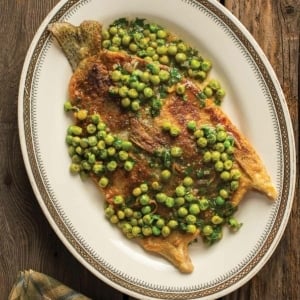
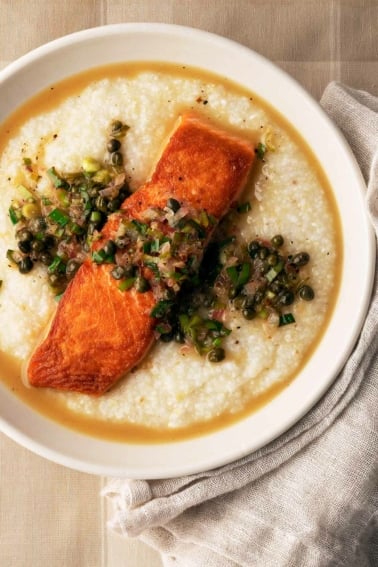
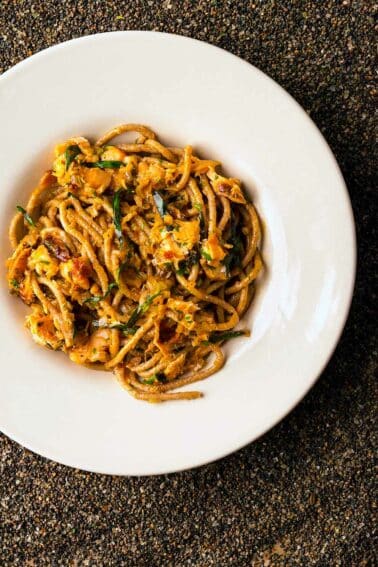
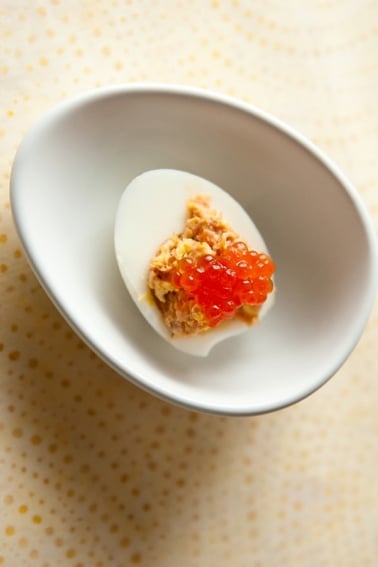
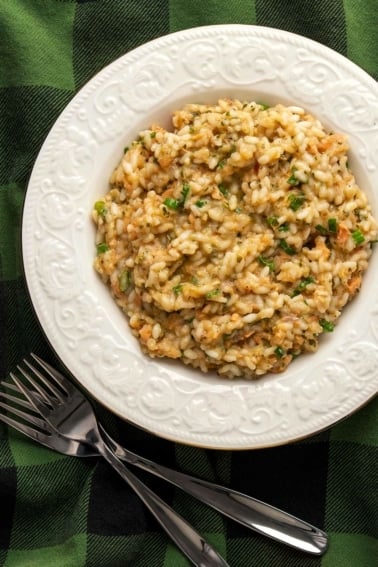
This recipe is simple, delicious, and quick. I do a glug of white wine so add another layer before reducing. I love it and so does the family!
Didn’t grow up as a fishing family. This was the perfect recipe.
I did a crappie this way a couple weeks ago. I left the skin and tail attached. It was delicious and it was the first time I ate a fish tail since I was a kid. Great simple recipe. Thanks Hank, hope your feeling better and hope to see you at Celebrations.
Thank you thank you thank you for not screwing up a beautiful fish like trout. I grew up in eastern Washington and north Idaho, oh do I miss it! Especially catching Macks and having them with fried potatoes, eggs and bacon for breakfast. For dinner we would simply put them in a foil packet with an ice cube, a pat of butter, fresh dill, onion and lemon slices, and salt and pepper on the grill. I have been banished to North Carolina where they don’t believe that anything is fully cooked unless it has been deep fried, and there ain’t no fish but croaker, spot and cats. I am very glad to have found you, and will definitely send my dad your way. I think you two would have quite a bit in common.
Hi Hank! Love your blog and your ethos. 🙂 I am a lifelong fly fisherman (caught my first trout on a fly with a bit of help at age 3 1/2). I have some fancy gear, but I grew up fishing the trout streams of Washington, Montana, Idaho, and Oregon (with both flies and bait)and have lived in all of those states. I’m glad you’re realizing that not all fly fishermen are obnoxious out-of-towners… I mean, if you don’t want to damage the environment, leave the fish alone! Why put a fish through all that then just throw it back? There are plenty of us who fish to feed ourselves and are content not to torment the poor creatures otherwise.
I agree with you on the Orvis Boys. I have in-laws who are born and raised in Montana. Imagine fishing blue ribbon trout fishery Rock Creek with your 7 year old son who catches a trio of keeper brown trout for the stringer only to have a group of tube-floating out-of-state Orvis Boys yelling about the need to practice catch and release. Poor kid wonders why he’s getting yelled at for doing what you’re supposed to do with fish you catch: Eat them!
Hey Hank, I lived in Colorado during high school and we spent many a weekend camping out and fishing the streams and cooking and eating trout. Yum!! Of course, first we had to learn that what we were throwing back was as good as they got. We had a Coloradan ask us why we were throwing fish back and we told him they weren’t full grown and we only kept big ones. Imagine our horror when we found out that if we didn’t keep the 12 inchers we weren’t gonna eat!! Nice to see that you know how to cook them and not ruin them with a lot of crud thrown on them.RobbieAnn
Great writeup, Hank. California is indeed a wondrous place. I’m in wine country, an hour from a pillar where I can buy fresh crab from local fisherman as well as hop on my friends boat for ocean salmon fishing, minutes away from plenty of trout and catfish lakes, and hopefully this winter I will drive a few hours for ice fishing.
Sounds like a ton of fun Hank.
I am big fan of trout fishing. I like to fish for them with fly rods, crank and spinner baits, and with night crawlers- and I like to eat them. I spent a week last summer paddling the lakes and rivers in and around Baxter State Park in Maine with a good friend. We took rods with us with intention of supplementing our provisions. We caught more fish than we needed and only kept a few we ate fresh each night… an original conservation model.
We grilled wild brook trout and lake whitefish over wood fires several evenings. They were some of the freshest and best tasting fish I have ever eaten.
I look forward to seeing more about trout in the coming months.
Caples is a great lake. Never fished there, but have driven by many times. Though I never thought of ice fishing in CA, it makes sense. Thanks again for the reminders of the unseen.